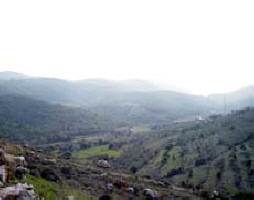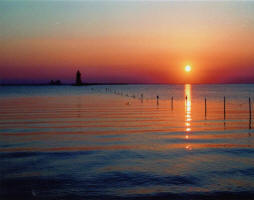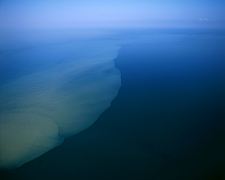- Regional water observation mechanism
- Regional Cooperation Assessment
- Water Quality Monitoring (JP)
- Water scarcity and drought (JP)
- Groundwater (JP)
- Waste water reuse (JP)
- Shared Water Resources Management (JP)
- Linking rural development and water management (JP)
- Waste management
- Water institutions
- Climate Change
- Floods
- Desalination
- Right to Water
- Irrigation
- Satellite data
- Water reports & data
- Hydrology
- Sanitation
- Gender and IWRM
- ArabWAYS
- Non-Revenue Water
- Virtual Water & Water Footprint
- WANA Water Panel
- Water Demand
- Water Governance
- Water Pricing
- Water accounts
- Water nexus Energy
- Geosciences
- Rural Management
 Water for agriculture in Europe
Water for agriculture in Europe
We need food and we need clean freshwater to produce our food. With growing demand from human activities on the one hand and climate change on the other, many regions especially in the south struggle to find enough freshwater to meet their needs. How can we continue growing food without letting nature go thirsty for clean water? A more efficient use of water in agriculture would certainly help.
A third of water use in Europe goes to the agricultural sector. Agriculture affects both the quantity and the quality of water available for other uses. In some parts of Europe, pollution from pesticides and fertilisers used in agriculture alone remain a major cause of poor water quality.
Our industries, lifestyles and the personal needs of our growing populations are also nature’s rivals for the use of clean water. Climate change adds an additional element of uncertainty to the availability of water resources. With prospects of changing precipitation patterns, some parts of Europe are expected to have more and others less freshwater available in the future. Faced with increasing demand and climate change, many users including nature will struggle to meet their water needs. In case of water scarcity, industry and households can develop ways of using less water, but our water-dependent ecosystems risk being irreversibly damaged. This would affect much more than life around a particular water body. It would affect us, too.
With the application of the right agricultural practices and supporting policy solutions, we can achieve significant water efficiency gains in agriculture, which would mean more water available for other uses, nature in particular.
Starting with efficient irrigation
One area where new practices and policies can make a significant difference in water efficiency gains is the irrigation of crops. In southern European countries such as Greece, Italy, Portugal, Cyprus, Spain and southern France, the arid or semi-arid conditions necessitate the use of irrigation. In these areas, nearly 80% of water used in agriculture currently goes to irrigation.
However, irrigation does not have to be so water intensive. Water efficiency gains are already being obtained across Europe through both conveyance efficiency (the proportion of abstracted water that is delivered to the field) and field application efficiency (the water actually used by a crop in relation to the total amount of water that was delivered to that crop). In Greece, for example, improved conveyance and distribution efficiency networks have led to an estimated 95% water efficiency gain compared to previously-used irrigation methods.
Policy plays a crucial role in inducing the agricultural sector to adopt more efficient irrigation practices. In the past, for example, water-pricing policies in some European countries did not necessarily require farmers to use water efficiently. Farmers rarely had to pay the true price of water reflecting the environmental and resource costs. In addition, agricultural subsidies obtained through the EU’s Common Agricultural Policy (CAP) and other measures were indirectly encouraging farmers to produce water-intensive crops using inefficient techniques. In the province of Cordoba, for example, the efficiency of cotton irrigation increased by approximately 40% after subsidies were partially decoupled from cotton production in 2004. A water pricing structure favouring efficient users and the removal of adverse agricultural subsidies is likely to lead to significant reductions in the quantity of irrigated water used in agriculture.
Changing how we do things
In addition to modified irrigation techniques, gains in water and cost savings can also be obtained through training and knowledge-sharing programmes that educate farmers on more water efficient practices. In Crete, for example, water savings of 9-10% have been achieved through the use of an irrigation advisory service. The service informs farmers by phone of when and how to apply water to crops based on daily estimates of the conditions affecting the crops.
Changing agricultural practices can also improve the quality of the water available for other water users in a cost-effective way. Using inorganic and organic fertilisers and pesticides, for example, can address many of the water pollution problems from agriculture. In addition, there is significant potential to improve water quality throughout Europe with little or no impact on profitability or productivity by, for example, reducing pesticide use, modifying crop rotations and designing buffer strips along water courses.
Using wastewater in agriculture
Through the use of wastewater in agriculture, more fresh water resources can be made available for other needs, including for nature and households. If the quality of the reclaimed water is properly managed, treated wastewater can provide an effective alternative for meeting agriculture’s demand for water.
The use of treated wastewater for agriculture is already providing significant water management benefits for some European countries. In Cyprus, for example, the recycled water targets for 2014 correspond to approximately 28% of the 2008 agricultural water demand. In Gran Canaria, 20% of water used across all sectors is supplied from treated wastewater, including the irrigation of 5,000 hectares of tomatoes and 2,500 hectares of banana plantations.
Getting the policies right
For a future where there is enough water available to meet the needs of our ecosystems with sufficient resources left for our consumption requirements, we need to provide the right policy packages to support efficiency measures. The EU’s Water Framework Directive (WFD) has contributed to this achievement through an encouragement of changes to agricultural practices that can improve both water quantity and quality in Europe, but further development of the CAP and national water pricing structures are still needed to ensure they also support the WFD objectives. The Blueprint to safeguard Europe’s water resources, to be published by the Commission by the end of this year, will focus on possibilities to increase water resource efficiency and on corresponding policy options. Water management in agriculture would certainly benefit from a stronger focus in the CAP on resource efficiency and ecosystem services.
A more efficient use of our water resources in agriculture is only one of the steps we need to take in order to reduce our impact on the environment. Without that step, we cannot achieve a resource-efficient economy or build a sustainable future.
Related publications
Towards efficient use of water resources in Europe
| Contact information | n/a |
|---|---|
| News type | Inbrief |
| File link |
http://www.eea.europa.eu/articles/water-for-agriculture |
| Source of information | EEA |
| Keyword(s) | irrigation |
| Subject(s) | AGRICULTURE |
| Geographical coverage | n/a |
| News date | 03/09/2012 |
| Working language(s) | ENGLISH |
 you are not logged in
you are not logged in





